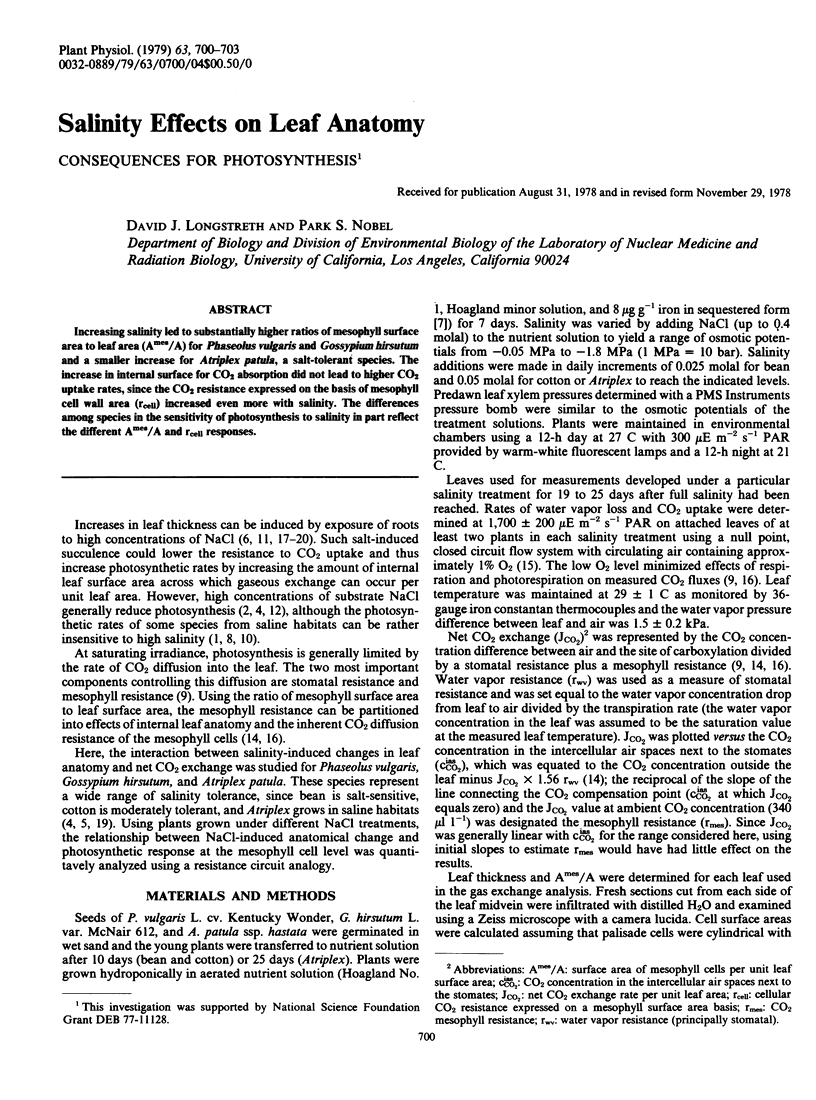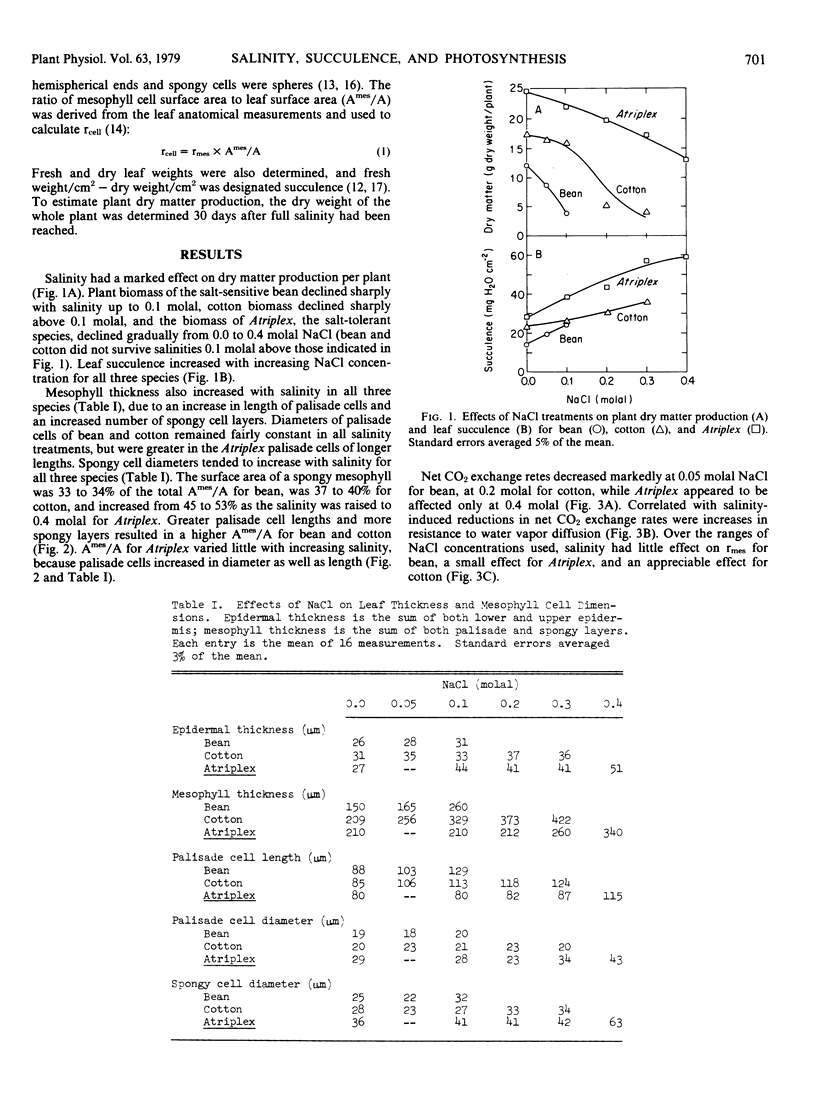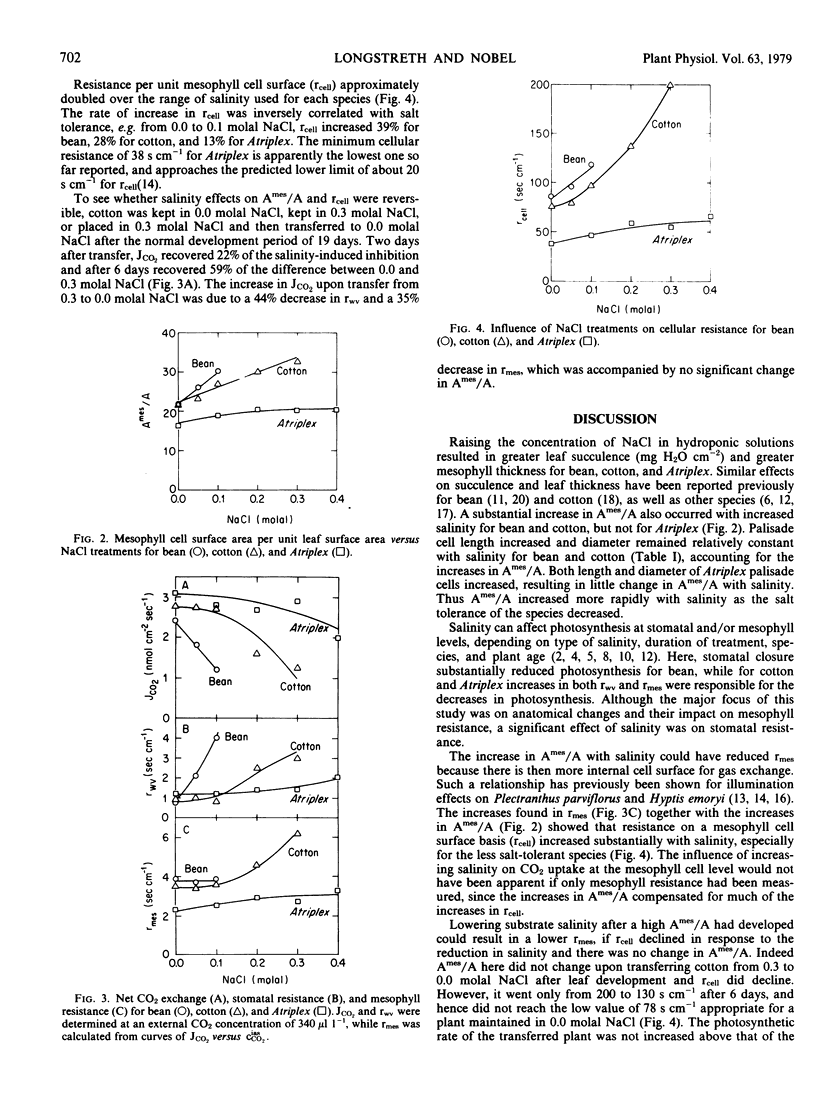Abstract
Increasing salinity led to substantially higher ratios of mesophyll surface area to leaf area (Ames/A) for Phaseolus vulgaris and Gossypium hirsutum and a smaller increase for Atriplex patula, a salt-tolerant species. The increase in internal surface for CO2 absorption did not lead to higher CO2 uptake rates, since the CO2 resistance expressed on the basis of mesophyll cell wall area (rcell) increased even more with salinity. The differences among species in the sensitivity of photosynthesis to salinity in part reflect the different Ames/A and rcell responses.
Full text
PDF



Selected References
These references are in PubMed. This may not be the complete list of references from this article.
- Nobel P. S., Hartsock T. L. Resistance Analysis of Nocturnal Carbon Dioxide Uptake by a Crassulacean Acid Metabolism Succulent, Agave deserti. Plant Physiol. 1978 Apr;61(4):510–514. doi: 10.1104/pp.61.4.510. [DOI] [PMC free article] [PubMed] [Google Scholar]
- Nobel P. S. Photosynthetic Rates of Sun versus Shade Leaves of Hyptis emoryi Torr. Plant Physiol. 1976 Aug;58(2):218–223. doi: 10.1104/pp.58.2.218. [DOI] [PMC free article] [PubMed] [Google Scholar]
- Nobel P. S., Zaragoza L. J., Smith W. K. Relation between Mesophyll Surface Area, Photosynthetic Rate, and Illumination Level during Development for Leaves of Plectranthus parviflorus Henckel. Plant Physiol. 1975 Jun;55(6):1067–1070. doi: 10.1104/pp.55.6.1067. [DOI] [PMC free article] [PubMed] [Google Scholar]


